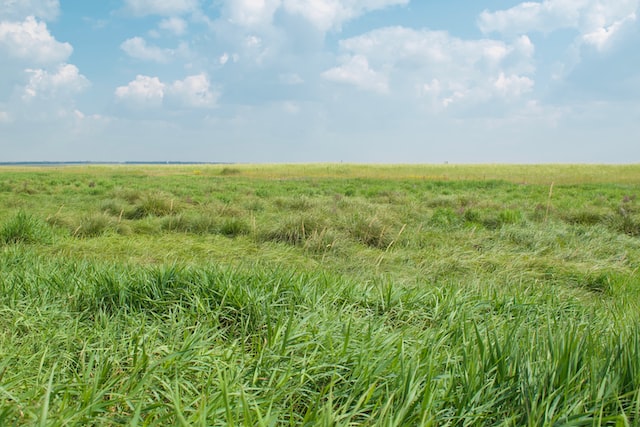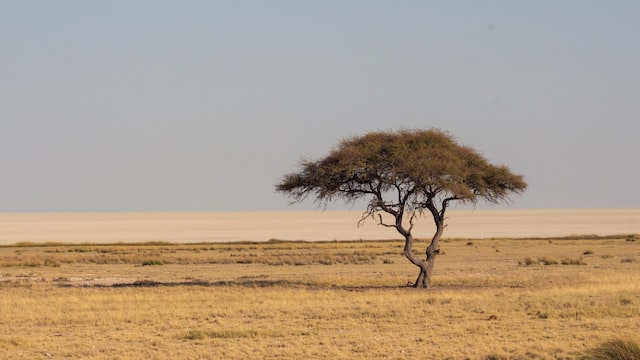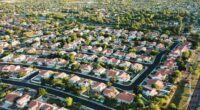Savannas are characterized by a seasonal rainfall regime that supports tall, woody trees and shrubs, while grasslands have fewer trees and bushes scattered throughout the landscape. Additionally, savannas tend to be found in tropical regions with hotter climates than those of grassland areas.
What are savannas?
(Photo by David Clode on Unsplash )

Savannas, also known as tropical grasslands, are a type of biome characterized by a mix of grasses and scattered trees, shrubs, and other vegetation. They are typically found in regions with warm temperatures and a distinct wet and dry season, such as Africa, South America, Australia, and India.
The grasses in savannas are often tall and coarse, and can grow up to several meters high, providing food for grazers like zebras, giraffes, and antelopes. The trees in savannas are usually widely spaced and do not form dense forests, allowing sunlight to reach the ground and supporting the growth of the grasses. The trees in savannas are usually well adapted to dry conditions and can often survive droughts and fires.
Savannas are also characterized by a complex ecosystem of animals that have adapted to the open grasslands. In addition to grazers, savannas are home to predators like lions, cheetahs, and hyenas. Birds, reptiles, and insects are also common in savannas.
Human activity, such as agriculture, urbanization, and livestock grazing, can have a significant impact on savannas. Overgrazing, in particular, can lead to desertification, as the grasses that anchor the soil are damaged or destroyed, leading to erosion and a loss of topsoil. Climate change is also expected to have significant impacts on savannas, as
What are grasslands?
(Photo by Stanislav Klimanskii on Unsplash )

Grasslands, also known as prairies, steppes, or plains, are biomes that are dominated by grasses and other herbaceous plants, rather than trees or shrubs. They are found in regions with moderate to low rainfall, and cover large areas of North America, South America, Africa, Asia, and Australia.
Grasslands are typically divided into two main types: temperate grasslands and tropical grasslands (also called savannas). Temperate grasslands are found in regions with cold winters and hot summers, while tropical grasslands are found in regions with warm temperatures and a distinct wet and dry season. Both types of grasslands are characterized by a lack of trees and the dominance of grasses and herbaceous plants.
Grasses in grasslands are typically adapted to survive droughts, grazing by herbivores, and periodic fires. Many grasses in grasslands have deep roots that allow them to access moisture deep underground, and can regrow quickly after grazing or fires. Grasslands are home to a variety of grazers, such as bison, antelope, and zebra, as well as predators like lions, cheetahs, and wolves.
In addition to supporting a diverse array of wildlife, grasslands also provide important ecosystem services to humans. They are important for grazing livestock, and many agricultural crops, such as wheat and corn, are grown on converted grasslands. Grasslands also play a crucial role in carbon sequestration, as grasses can store large amounts of carbon in their roots and soil.
However, grasslands are also under threat from human activities such as overgrazing, agricultural conversion, urbanization, and climate change. Overgrazing, in particular, can lead to desertification, as the grasses that anchor the soil are damaged or destroyed, leading to erosion and a loss of topsoil. Climate change is expected to exacerbate these threats, as changing rainfall patterns could alter the balance between grasses and trees and lead to the expansion or contraction of the grassland biome.
The difference between savannas and grasslands?
There are several key differences between savannas and grasslands. Savannas are typically found in tropical or subtropical regions, whereas grasslands are found in temperate regions. Additionally, savannas tend to have more trees and shrubs than grasslands. The climate of a savanna is also drier than that of a grassland, with the majority of rainfall occurring during the wet season.
Soil type is another key difference between these two ecosystem types. Savannas typically have nutrient-poor soils, while grasslands have richer soils. This difference is due to the fact that savannas experience more fires than grasslands. Fires help to release nutrients into the soil, making it more fertile.
Another key difference between savannas and grasslands has to do with the primary grazers in each ecosystem. In savannas, grazing animals such as zebras and antelope play a key role in maintaining the landscape. Grasslands, on the other hand, are dominated by grazing animals such as bison and cattle.
Why is it called savanna?
The term “savanna” comes from a Spanish word “sabana”, which means “treeless plain.” The word “sabana” in turn is believed to have its roots in a Taino word for a flat grassy plain found in the Caribbean.
The name “savanna” was first used to describe the grassy plains of South America, particularly the llanos region that spans parts of Venezuela and Colombia. The term was later adopted to describe similar landscapes in Africa and other parts of the world.
Savannas are characterized by a mix of grasses and scattered trees and shrubs, which together create a distinctive and open landscape. The term “savanna” has come to be associated with this specific type of ecosystem, and is now used to describe a variety of grassland landscapes around the world.
Why is it called grassland?
The term “grassland” is used to describe a biome that is dominated by grasses and herbaceous plants, rather than trees or shrubs. The name “grassland” comes from the fact that grasses are the most abundant type of plant in these ecosystems.
Grasslands are often referred to by different names, depending on their location and climate. For example, in North America, grasslands are often called “prairies,” while in Eurasia they are referred to as “steppes.” In Australia, grasslands are called “rangelands” or “outback,” while in South America they are called “pampas.”
What are characteristics of the savanna?
- A mix of grasses and scattered trees: Savannas are defined by their mix of grasses and trees, with trees often spaced far apart and interspersed among the grasses. This creates an open, sunlit landscape that is different from both forests and true grasslands.
- Wet and dry seasons: Savannas experience distinct wet and dry seasons, with rainfall typically concentrated in a few months of the year. During the wet season, the grasses and other vegetation grow quickly, while the dry season can be harsh and challenging for both plants and animals.
- Warm temperatures: Savannas are found in tropical and subtropical regions, and temperatures are typically warm year-round, with average temperatures ranging from 20 to 30°C (68 to 86°F).
- Fire-adapted ecosystems: Many savannas are adapted to regular fires, with grasses and trees able to withstand or even benefit from occasional fires that clear away dead plant material and stimulate new growth.
- Rich biodiversity: Despite their open appearance, savannas can be rich in biodiversity, with a variety of grasses, trees, and other plants, as well as large herbivores like giraffes, zebras, and antelopes, and predators like lions, cheetahs, and hyenas.
- Importance for human societies: Savannas have historically been important for human societies, providing habitat for wildlife, as well as resources like food, water, and shelter. Today, many savannas are used for grazing livestock and agriculture, and are home to many indigenous communities.
What are characteristics of the the grasslands?
- Grasses: As the name suggests, grasses are the dominant type of vegetation in grassland ecosystems. These grasses are often tall and grow in dense clumps, and can range from short and fine to tall and coarse, depending on the specific type of grassland.
- Few trees and shrubs: Unlike savannas, grasslands typically have few or no trees and shrubs. Instead, they are dominated by open spaces and expansive views.
- Moderate to low rainfall: Grasslands receive moderate to low amounts of rainfall, typically between 250 to 750 millimeters (10 to 30 inches) per year. This means that they are generally drier than forests but wetter than deserts.
- Seasonal variations in temperature: Grasslands often have seasonal variations in temperature, with hot summers and cold winters. The temperature range varies depending on the location and specific type of grassland.
- Rich soil: Grasslands often have rich, fertile soil that is well-suited for growing crops and supporting grazing animals. This soil is often the result of the accumulation of organic matter from grasses and other plants over many years.
- Grazing animals: Grasslands are home to a variety of grazing animals, including bison, wildebeest, antelopes, gazelles, and prairie dogs, among others. These animals have adapted to survive on the grasses and other vegetation that make up the majority of the biome.
- Fire-adapted ecosystems: Like savannas, many grasslands are adapted to regular fires, which help to clear away dead plant material and stimulate new growth.
- Threats from human activities: Grasslands are under threat from a variety of human activities, including agricultural conversion, overgrazing by livestock, and climate change. These activities can lead to desertification, loss of biodiversity, and other ecological impacts.
Animals that live in the savannah and grasslands
| Animal | Savanna/Grassland |
|---|---|
| African elephant | Savanna |
| Bison | Grassland |
| Cheetah | Savanna |
| Coyote | Grassland |
| Gazelle | Savanna |
| Giraffe | Savanna |
| Groundhog | Grassland |
| Hyena | Savanna |
| Kangaroo | Grassland |
| Lion | Savanna |
| Prairie dog | Grassland |
| Wildebeest | Savanna |
Featured Image By – Photo by Estevao Gedraite on Unsplash








